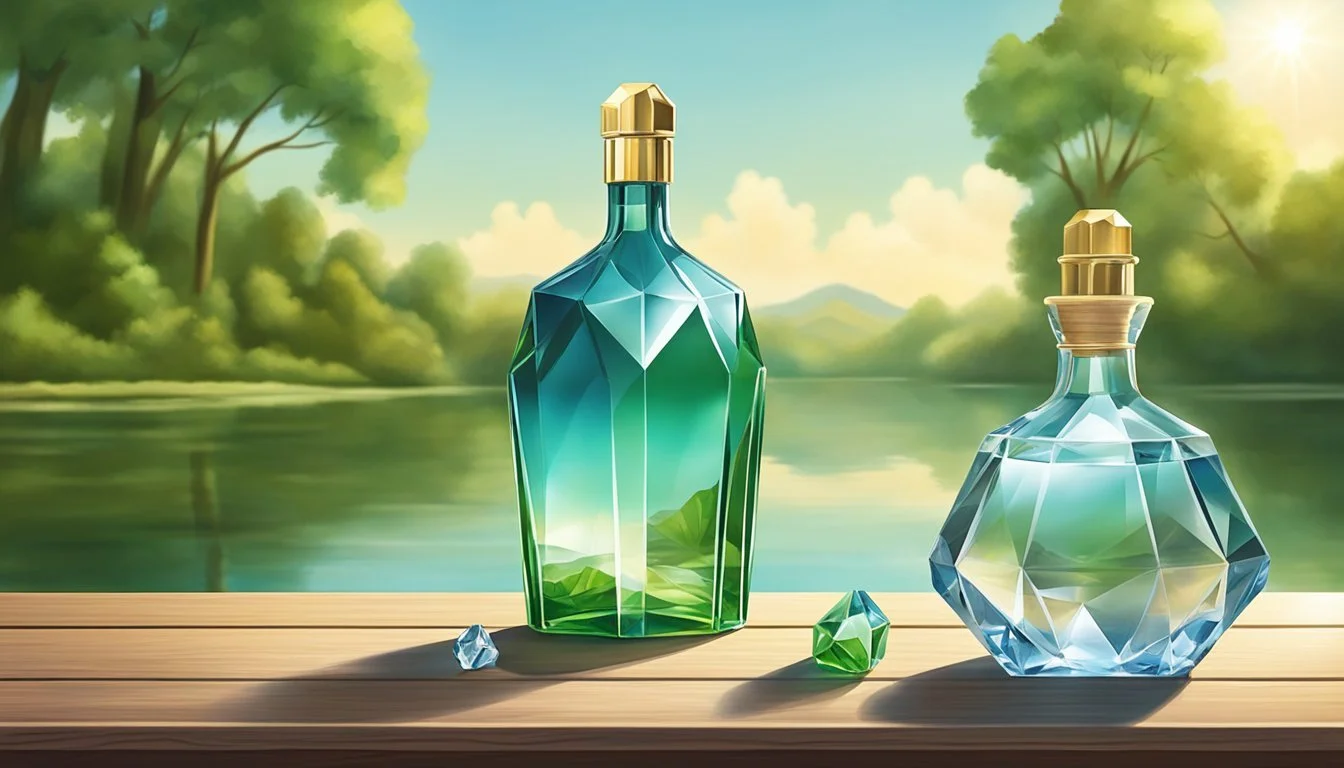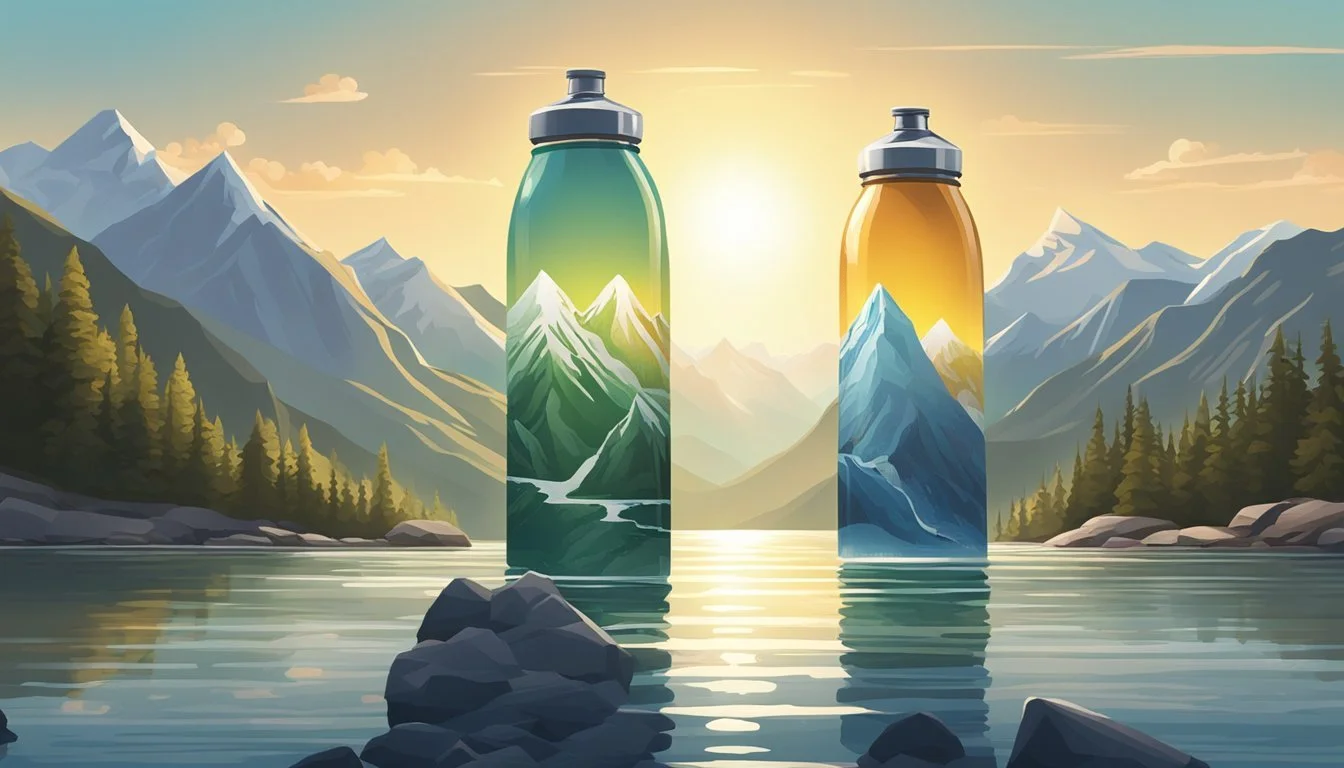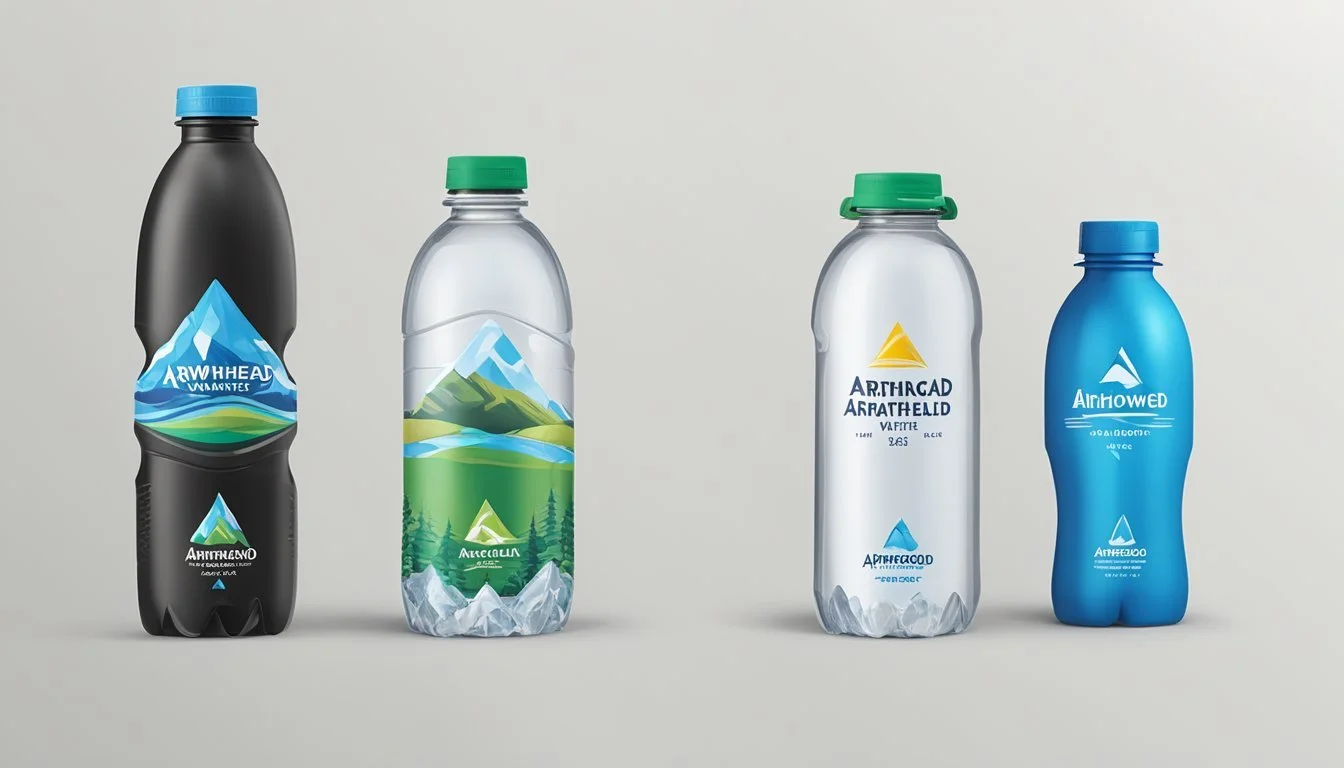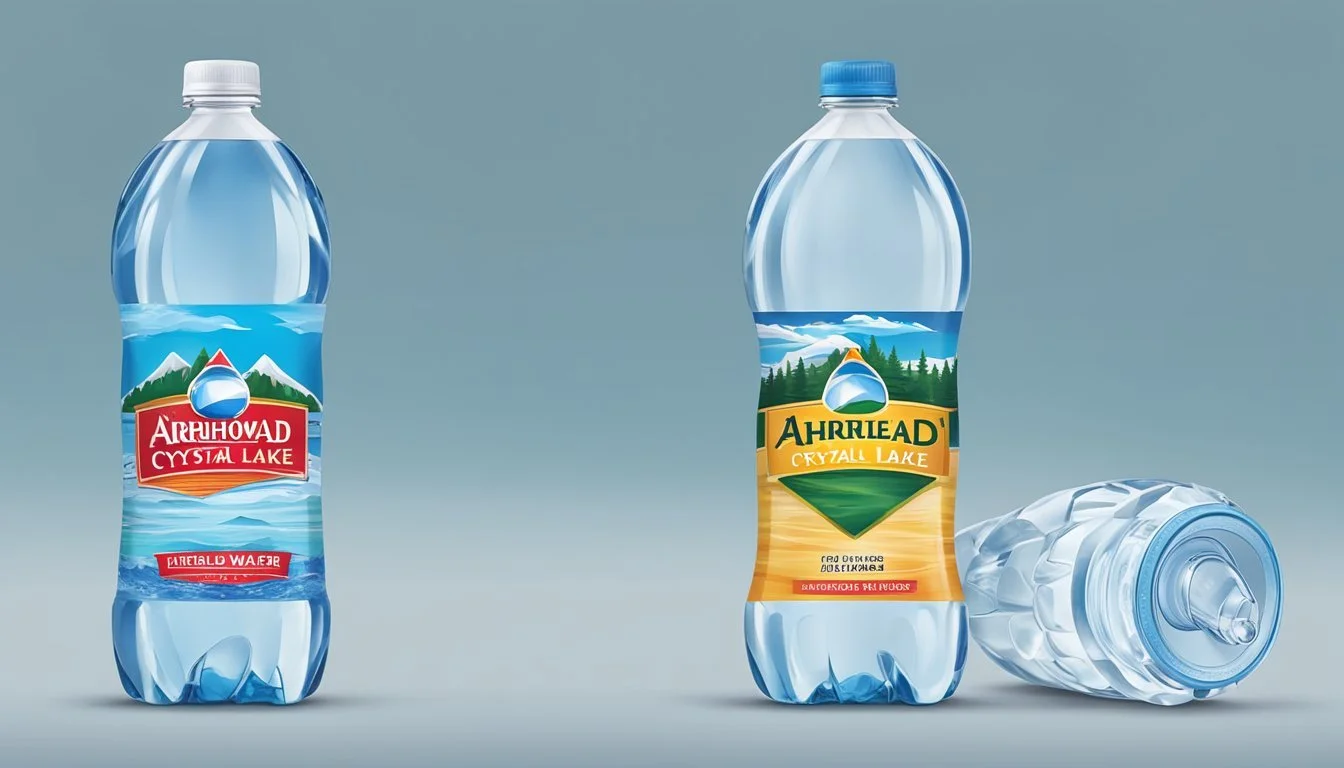Arrowhead vs. Crystal Lake
A Comparison of Bottled Water Quality
In the vast market of bottled water, discerning the superior choice between popular brands is essential. When comparing Arrowhead and Crystal Lake, Crystal Lake often edges out in terms of taste and purity. Arrowhead, sourced from mountain springs across the western U.S. and Canada, is known for its availability and affordability.
Crystal Lake, on the other hand, tends to stand out for its crisp, clean flavor. This brand appeals to those who prioritize a refreshing, untainted taste in their bottled water. While Arrowhead offers a reliable option for the budget-conscious, Crystal Lake's focus on quality makes it a favorite among those with a discerning palate.
For consumers evaluating these two brands, the decision often boils down to prioritizing either accessibility or superior taste. Crystal Lake's commitment to high standards in purification and flavor results in a more satisfying drinking experience, positioning it as the preferred choice for many bottled water enthusiasts.
Understanding Bottled Water
Bottled water varies significantly in origin, treatment, and labeling. Each type is governed by specific standards ensuring safety and quality, while labels provide details necessary for informed choices.
Types of Bottled Water
Natural Mineral Water is sourced from a protected underground reservoir. It must contain a consistent mineral content and emerge naturally from the source. Surface filters are permitted, but the water must remain untreated chemically.
Spring Water also originates from an underground source but is collected directly from the spring or through a borehole tapping into the underground formation. It retains the mineral profile of its source location.
Purified Water undergoes extensive treatment processes like distillation, deionization, or reverse osmosis to remove impurities. This type often starts as tap water or groundwater but is refined to meet purity standards.
Regulatory Standards
The U.S. Food and Drug Administration (FDA) regulates bottled water, ensuring it meets specific safety and quality standards comparable to those of Environmental Protection Agency (EPA) regulations for tap water.
Natural mineral and spring waters must maintain their original purity at the source. Purified water must meet high standards of impurity removal.
Bottled water facilities are subjected to regular, stringent inspections. Bacteria levels, chemical concentrations, and packaging methods are consistently monitored to ensure consumer safety.
Bottled Water Labeling
Labeling on bottled water must clearly indicate the type—such as spring, mineral, or purified. Labels should also provide the water’s source and the treatment method used.
Ingredients and mineral content must be detailed, helping consumers make informed choices. Claims like “natural” or “100 percent spring water” must be accurate and verifiable by documented sources.
Example Label Breakdown:
Source: Mountain Spring
Type: Natural Mineral Water
Treatment Method: Filtration (if applicable)
Accurate labeling ensures transparency, allowing shoppers to select products fitting their preferences and health needs.
Evaluating Water Sources
Arrowhead and Crystal Lake obtain their water from different sources and use distinct purification processes. Understanding these factors can help determine which brand offers purer and more sustainable options.
Spring Water Sources
Arrowhead sources its water from natural springs in the United States, such as those in California and Colorado. These springs are known for their clean and refreshing water, derived from groundwater that has naturally filtered through layers of rock.
Crystal Lake, on the other hand, also sources its water from natural springs, but from regions with a reputation for exceptionally pure groundwater. This difference in locations can impact the mineral content and taste of the water.
Both brands emphasize their commitment to maintaining the environmental integrity of their sources. Water stewardship efforts ensure sustainable extraction, preserving the natural ecosystem around the springs.
Purification Processes
Arrowhead employs a multi-step filtration process to ensure the water meets high safety standards. This includes carbon filtration to remove contaminants, reverse osmosis to eliminate impurities, and UV light treatment to kill bacteria. The water is then tested to maintain purity and quality.
Crystal Lake follows a rigorous purification protocol as well. The process typically involves initial screening for large particles, followed by microfiltration and reverse osmosis. Ultraviolet light and ozonation are used to disinfect and ensure the water is free from harmful microorganisms.
Both brands pride themselves on providing pure and safe drinking water, but the specific methods and technologies used can slightly differ, impacting the final product's taste and perceived quality.
The Battle of Brands
The competition between Arrowhead and Crystal Lake bottled waters presents a fascinating study in branding and consumer preferences. This section breaks down the unique aspects of each brand, examining their strengths and market positions.
Arrowhead's Unique Selling Proposition
Arrowhead emphasizes its natural spring water origin, sourced from multiple springs across the western United States. This commitment to sourcing helps market Arrowhead as a pure, high-quality option.
The brand prides itself on sustainability efforts, utilizing 100% recycled materials for many of its bottles. This appeals to environmentally-conscious consumers, setting Arrowhead apart in the crowded bottled water market.
Arrowhead's extensive distribution network ensures availability in numerous retail locations, boosting its visibility and accessibility. Taste quality and natural mineral content are often highlighted in their marketing campaigns, reinforcing the image of a premium product.
Crystal Lake's Market Position
Crystal Lake focuses on purity and taste, often marketing its water as refined and exceptionally clean. Known for its crisp flavor and smooth finish, Crystal Lake captures the attention of discerning water drinkers seeking a refreshing option.
The brand positions itself in a more premium segment, often found in higher-end retail stores and establishments.
Crystal Lake’s branding emphasizes minimalistic design and sophisticated imagery, appealing to a more upscale demographic. The company also highlights its rigorous filtration methods, which aim to remove impurities effectively without compromising natural taste.
Comparing Other Popular Brands
When comparing Arrowhead and Crystal Lake to other leading brands like Nestlé Pure Life, Evian, and Fiji, differences in sourcing, taste, and marketing strategies become apparent.
Mountain Valley is another noteworthy contender, achieving high marks for its light, clean taste and mineral content. Nestlé Pure Life, despite having a massive market presence, often ranks lower due to its reliance on purified tap water and presence of additives like sodium.
Meanwhile, Evian and Fiji stand out for their consistent purity and high mineral content, sourced from protected aquifers that contribute to their distinctive tastes. Each brand’s unique attributes offer varied experiences, making consumer preference a key factor in determining the "best" bottled water.
The key to selecting a favorite often lies in the specific prioritization of factors like taste, environmental impact, brand ethos, and availability.
Taste and Quality Perceptions
Arrowhead and Crystal Lake offer different experiences when it comes to taste and quality, influenced by factors such as purification processes, pH levels, and mineral content. Each brand appeals to specific preferences, making it crucial to evaluate their distinct characteristics.
Assessing Taste Profiles
Taste is a primary factor for many bottled water consumers. Arrowhead water is noted for its unique mineral flavor, which some find refreshing, while others may find it robust. Crystal Lake, on the other hand, is often praised for its clean and crisp taste, which is less pronounced in mineral content.
Taste tests consistently show a divide. Crystal Lake often ranks higher due to its smooth finish, which many prefer for everyday use. In comparison, Arrowhead's distinct taste is an acquired preference. Both are marketed differently, with Crystal Lake appealing to those seeking a neutral palate and Arrowhead targeting those who prefer a more natural, mountain spring taste.
Quality and Purity Evaluations
Quality and purity standards are essential for ensuring safe drinking water. Arrowhead sources its water from natural springs and emphasizes minimal processing to maintain its mineral properties. Their water undergoes basic filtration to remove impurities while retaining essential minerals like calcium and magnesium.
Crystal Lake focuses more on advanced purification processes, such as reverse osmosis and UV light treatment. This results in water that is nearly free of contaminants and additives. Crystal Lake’s rigorous purification ensures a high level of purity, appealing to those who prioritize cleanliness over natural mineral content.
PH Levels and Mineral Content
The pH level and mineral content of bottled water can affect taste and health benefits. Arrowhead water typically has a pH level around 7.4, making it slightly alkaline. This pH balance, combined with natural electrolytes, can be beneficial for hydration and balancing body pH levels.
Crystal Lake water, with a pH level closer to neutral at around 7.0, offers a straightforward hydration option without the influence of additional minerals. Its relatively neutral pH makes it suitable for people with specific dietary restrictions or those sensitive to taste variations caused by mineral content.
By comparing these aspects, one can better understand the differences between Arrowhead and Crystal Lake, helping consumers make an informed choice based on individual preferences and health considerations.
Health and Hydration
Both Arrowhead and Crystal Lake bottled waters offer key benefits related to hydration and nutritional considerations. Differences in electrolyte content and source can significantly impact their suitability for individual needs.
Hydration Benefits of Bottled Water
Bottled water is essential for maintaining proper hydration levels. Arrowhead and Crystal Lake both provide reliable sources of hydration. Regular consumption of either brand can help keep the body hydrated, which is fundamental for overall health.
Arrowhead water is sourced from natural springs, making it a popular choice for hydration. Natural spring water often contains minerals that may contribute positively to taste and hydration.
Crystal Lake water, similarly, offers dependable hydration but may come from various sources including municipal supplies. Both waters benefit the body by replenishing fluids, essential for normal cellular function, physical performance, and maintaining energy levels.
Nutritional Considerations
When considering bottled water for hydration, nutritional content can play a critical role. Arrowhead water typically contains natural minerals like calcium and magnesium, contributing to its taste and potential health benefits. It generally lacks added chemicals, making it a more natural choice for consumers.
Crystal Lake water, on the other hand, sometimes includes added electrolytes. These electrolytes, such as sodium and potassium, can be beneficial for maintaining electrolyte balance, particularly important after intense physical activity.
However, the presence of artificial additives or preservatives in some bottled waters might be a concern for those seeking purely natural options. Arrowhead stands out for its minimal processing compared to brands that might fortify with additional compounds.
In conclusion, both Arrowhead and Crystal Lake waters offer hydration benefits, but their nutritional profiles might cater to different preferences and needs.
Packaging and Environmental Impact
Arrowhead and Crystal Lake prioritize environmentally friendly practices in their packaging. They focus on reducing BPA exposure, innovating eco-friendly alternatives, and promoting recycling and waste management.
Plastic Bottles and BPA Exposure
Both Arrowhead and Crystal Lake use plastic bottles for their products. Arrowhead has made significant strides in utilizing BPA-free plastics, which reduces health risks associated with Bisphenol A. Crystal Lake also emphasizes using BPA-free materials to ensure consumer safety.
Plastic bottle usage remains common, though they acknowledge the environmental concerns linked to plastic waste. Efforts to minimize BPA exposure show a commitment to consumer health and environmental responsibility.
Eco-Friendly Alternatives and Innovations
Arrowhead has introduced a line containing 50% recycled plastic, reflecting a move towards sustainability. They are exploring glass bottles, which are more environmentally friendly and recyclable. Crystal Lake is similarly innovating with eco-friendly packaging solutions.
They focus on reducing their carbon footprint through lighter packaging and using alternative materials. The competition in adopting green technologies benefits consumers and the environment.
Recycling and Waste Management
Both brands encourage recycling to lessen environmental impact. Arrowhead's use of recycled plastic is a step towards integrating waste management practices into their production process. Recycling initiatives aim to reduce landfill waste and promote reusability.
Crystal Lake also emphasizes recycling, incorporating consumer education on proper waste disposal. The commitment to recycling and waste management showcases their dedication to sustainable practices.
Consumer Insights and Preferences
Consumers make choices between Arrowhead and Crystal Lake based on multiple factors, including convenience and purchasing trends. Understanding these preferences provides an insight into what drives their decisions.
The Role of Convenience
When it comes to bottled water, convenience is a significant factor for many consumers. This encompasses aspects such as availability, packaging size, and ease of transport.
Consumers often purchase bottled water in bulk from grocery stores, making large pack sizes a preferred option. Both Arrowhead and Crystal Lake offer various packaging options, from small single-use bottles to larger family packs, appealing to different consumer needs.
Many prefer grab-and-go options. This has led to an increase in smaller, more portable bottle sizes that fit into car cup holders and gym bags. Additionally, placement within stores plays a crucial role. Products that are prominently displayed or placed near checkout counters tend to attract more spontaneous purchases.
Trends in Consumer Purchases
Examining recent trends reveals that consumers are increasingly drawn to brands that emphasize sustainability and quality.
Some consumers consult water sommeliers or rely on blind taste tests to guide their choices. Differences in taste, such as mineral content and purity, can influence preference. As noted in search results, Crystal Lake may be preferred for its taste, while Arrowhead may lag in such evaluations.
Sustainability is also a growing concern. Many consumers are opting for brands with environmentally friendly practices and packaging. This trend impacts the purchasing decisions significantly, especially among younger demographics who are more eco-conscious.
Brand loyalty plays a role, too. Consumers who identify positively with a brand’s image or advertising are more likely to repurchase. Thus, both Arrowhead and Crystal Lake must continuously innovate to maintain and grow their customer base.
Corporate Profiles and Sustainability
Arrowhead and Crystal Lake are key players in the bottled water market, influencing the industry significantly and making various commitments toward sustainability. Their corporate profiles and initiatives provide insights into their market position and environmental strategies.
Industry Giants and Market Influence
Arrowhead, a brand under Nestlé Waters, has a strong presence in the bottled water industry. Nestlé Waters is one of the largest bottled water companies globally, highlighting its vast market influence.
Crystal Lake, though smaller, has carved out a niche with its focus on natural spring water sources. Both companies leverage their brand reputation to maintain market share. Nestlé, through various brands, dominates the landscape alongside PepsiCo and Coca-Cola, who also hold significant parts of the market with brands like Aquafina and Dasani.
Sustainability Commitments
Arrowhead emphasizes environmentally friendly practices with initiatives in water conservation and reducing plastic waste. Nestlé Waters has set goals to make its packaging 100% recyclable or reusable by 2025, demonstrating a commitment to sustainability.
Crystal Lake touts its use of BPA-free, recyclable bottles and efforts to source water sustainably. Membership in the International Bottled Water Association aligns them with industry standards and practices promoting environmental responsibility. These commitments reflect a growing trend among bottled water companies to prioritize sustainability in their operations.







